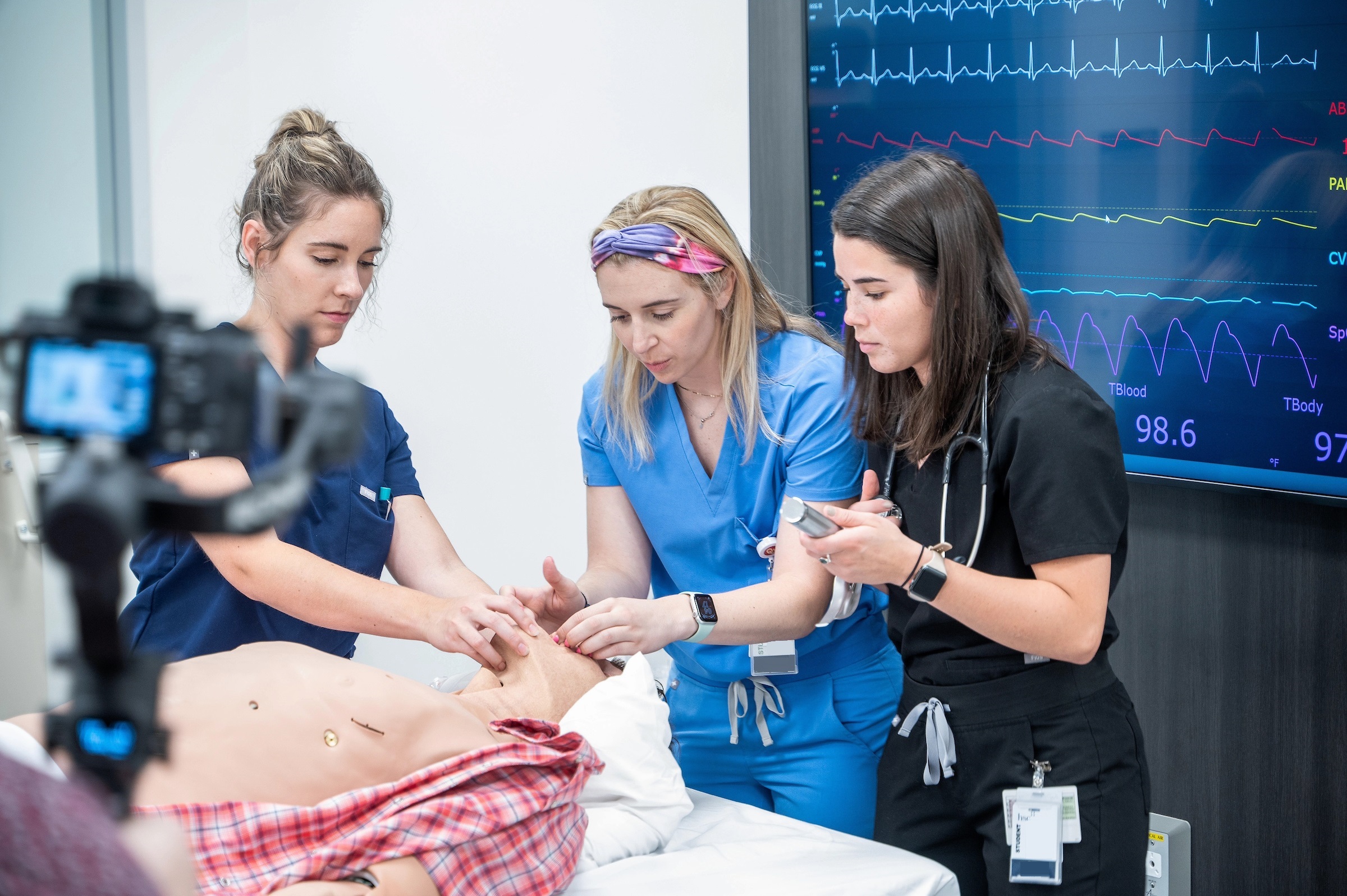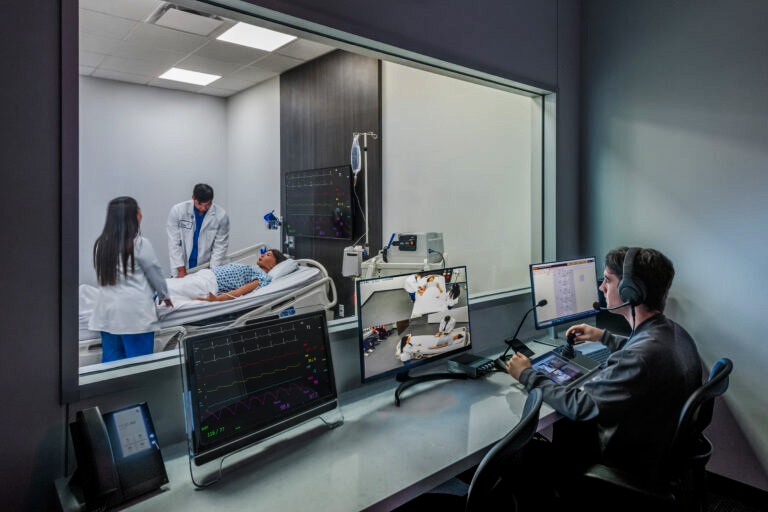Friday, January 31, 2025

The Regional Simulation Center at The University of North Texas Health Science Center at Fort Worth offers 16,000 square feet where students can get firsthand practice in clinical settings in safe environments.
The center features include 14 authentic-looking clinical exam rooms, immersive virtual reality projection technology and hi-fidelity manikins that can blink eyes, simulate breathing and include vital stats to give students hands-on experience in what it is like to treat a patient. The center’s technology can replicate virtually any health care scenario across multiple disciplines and has uses for both medical students and seasoned health care providers.
For many students taking part in the Simulation Center it would be their first time to perform like a doctor.
Second year Texas College of Osteopathic Medicine student Nathan Smernoff obtained his first experience as part of the student-run club, Student Initiative in Medical Simulation.
Firsthand work not only teaches the skills necessary to tend to someone’s health needs, but the emotional weight of potential scenarios as well.
 The Simulation Center can tailor the simulation according to the objectives and parameters
set by the requestor of the simulation. When a simulation takes place, students tend
to the health needs of a simulated patient, while a professor in another room reads
from a script on either what the patient, or a potential nearby caregiver is expressing.
Students then talk back to the simulated patient and caregiver.
The Simulation Center can tailor the simulation according to the objectives and parameters
set by the requestor of the simulation. When a simulation takes place, students tend
to the health needs of a simulated patient, while a professor in another room reads
from a script on either what the patient, or a potential nearby caregiver is expressing.
Students then talk back to the simulated patient and caregiver.
“I went to a case meeting where I was placed on a team and given a patient. We had a manikin lying in bed, vitals on the monitor and a upperclassmen moderator giving us a patient history,” Smernoff said. “After speaking with the patient and performing a physical exam, my team decided on labs and imaging. We ended up diagnosing appendicitis and it felt like a slam dunk! I learned some important points in patient care and quality of service.”
The focus on emotional support teaches students working one on one with patients how to provide assurance but to not make guarantees when providing care.
In the debriefing after a simulation, student and professor talk through what the student might have felt with the outcomes to help rationalize lingering feelings on working with both the patient and any caregivers in the room. Students are not set up to fail.
“The intention there is not to break their confidence,” said Joshua Christian, operations manager for the HSC Simulation Center. “The simulation center humanizes work outcomes.”
“The sim center provides students with a psychological safety net where they are meant to learn and ‘build on success,’” Christian said. “The center provides a great space for students to practice the ability to calm down the possibly tense scenarios they might encounter in health care.”
“While the first year of medical school will teach every physical exam maneuver and every question you need to ask your patient, it really helps to go to the Simulation lab to practice selecting the best questions and physical exams to do for your patient,” Smernoff said. “This is where we learn to not just follow a script, but to know what we are asking and testing to be efficient and get the right diagnosis and treatment for our patients. It takes one level of skill to remember every neurological physical exam skill you might need to use, but a greater level of skill to know which ones are most important to use for your patient and why.”
In addition to script reading and the use of manikins, HSC also contracts standardized patients to act in a predetermined role for students to gain exposure to practice providing health care in different scenarios with real-life people.
“Working with the standardized patients is especially valuable to us because it gives us the chance to talk with a real person and practice communicating in the role of a physician in a safe and controlled environment,” Smernoff said. “We have a lot of opportunities in our second-year curriculum to gather information and make diagnoses, but working with a standardized patient adds a fun level of complexity, now you’re not just diagnosing a disease, but a person.
“Something TCOM’s curriculum focuses on is holistic care,” Smernoff said. “Asking questions about stressors for your patient, how that affects their condition and then what you can do about it.”
Whether through live actors or scripts, the Simulation Center provides a great place for students to talk through and learn through the emotional side of providing health care.
 The simulated environments are a “low risk” method of practice to optimize the experience
and growth in confidence of students as they gain experience with the emotional intelligence
needed to provide care to patients.
The simulated environments are a “low risk” method of practice to optimize the experience
and growth in confidence of students as they gain experience with the emotional intelligence
needed to provide care to patients.
“Student ability to practice scenarios such as the ‘noncompliance’ of a patient is important, so they give alternatives and become partners in their own health,” Christian said.
Working through real scenarios can be nerve-racking, especially when you’re performing in front of your peers.
“While this might seem daunting, having your team on your side really increased my confidence to go out into the real world,” Smernoff said. “I remember one particular case we did in SIMS that brought me right back to a patient I had seem in the emergency department while shadowing. Our manikin’s story was almost identical to our real patient’s life. This made really reminded me that we aren’t just working with manikins, but situations that people face daily.
“Practicing real life scenarios was so fun. Everyone loves getting to transition from solo schoolwork to the team dynamics of patient care,” Smernoff said. “Being able to apply this knowledge and make a difference in a patient’s life is one of the motivating factors that helps us stay focused and learn so much.”
From HSC Newsroom - Patient Care by Cindy Vasquez